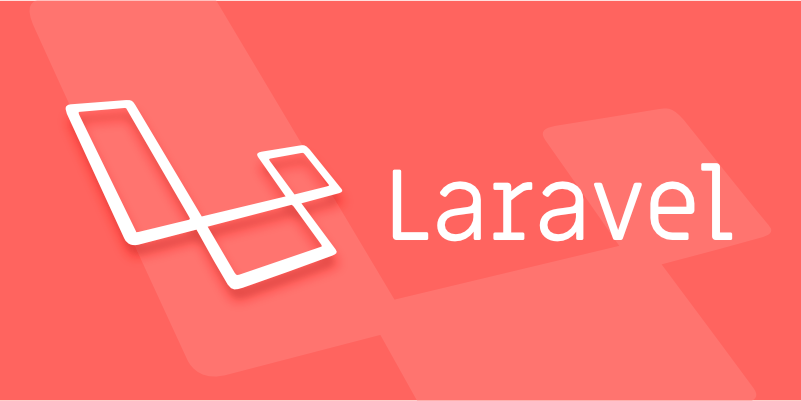The most direct and effective way to test the JSON API in Laravel is to use PHPUnit combined with Laravel's own testing tools. 1. Use the Artisan command to generate test classes, quickly create test files and write use cases; 2. Write basic test cases to verify status code 200, JSON structure and data content, such as through assertStatus and assertJsonStructure methods; 3. Simulate authenticated user requests, use the actAs method to simulate Sanctum login, and pass parameters in the POST request for assertions; 4. Use RefreshDatabase trait and database migration to ensure test consistency, and generate test data with the model factory; in addition, you can use the dump or dd method to debug the response content.

Testing the JSON API in Laravel is actually mainly focused on functional verification, data correctness, status code return, and format specifications. Let me talk directly about the key point: Using PHPUnit combined with Laravel's own testing tools is the most direct and effective way .

1. Quickly create test classes using Laravel's test generator
Laravel provides the Artisan command to generate test files, such as:
php artisan make:test Api/YourApiTest
This command will generate a test class that inherits Tests\TestCase by default and has a basic namespace structure. You can write various test cases in it.

If you are using Feature testing style (recommended), Laravel provides get , post , json and other methods to simulate requests.
2. Write basic test cases for JSON API
A typical JSON API test usually includes the following aspects:

- Whether the request was successful (status code 200)
- Whether the returned data structure meets expectations
- Whether the correct data content was returned
For example, suppose you have a /api/users interface that returns JSON data:
public function test_get_users_returns_json()
{
$response = $this->getJson('/api/users');
$response->assertStatus(200)
->assertJsonStructure([
'data' => [
'*' => ['id', 'name', 'email']
]
]);
}Two assertions are used here:
-
assertStatus(200): Ensure the request is successful -
assertJsonStructure: Ensure that the returned JSON structure is as expected
3. Simulation authentication and parameter delivery
Many APIs require authentication, such as using Sanctum or Passport. You can mock logged in users in the test:
use Illuminate\Foundation\Testing\WithFaker;
use Illuminate\Foundation\Testing\RefreshDatabase;
public function test_authenticated_user_can_access_api()
{
$user = User::factory()->create();
$this->actingAs($user, 'sanctum')
->getJson('/api/user/profile')
->assertStatus(200);
}If it is a POST request, you can also pass parameters:
public function test_create_user()
{
$data = [
'name' => 'John Doe',
'email' => 'john@example.com',
'password' => 'password123',
];
$this->postJson('/api/users', $data)
->assertStatus(201)
->assertJson(['message' => 'User created successfully']);
}4. Ensure test consistency using data factory and database snapshots
Laravel provides a very convenient model factory and database migration mechanism. Before testing, you can refresh the database and insert the test data:
php artisan migrate:fresh --seed
Use trait in the test class:
use Illuminate\Foundation\Testing\RefreshDatabase; use RefreshDatabase;
This way, the database will be reset before each test to avoid data contamination.
Tips: Use dd() to view the returned content
If you want to see the return content when writing a test, you can use it in the test:
$response->dump();
or:
dd($response->json());
This is useful when debugging JSON responses that are not well-structured.
Basically that's it. Writing tests may seem troublesome, but once you have finished writing them, you will be particularly confident when modifying the functions in the future. API testing is not complicated, but details are easy to ignore, such as field structure and authentication status. It is recommended to cover more boundary situations when writing tests.
The above is the detailed content of How to test a JSON API in Laravel?. For more information, please follow other related articles on the PHP Chinese website!

Hot AI Tools

Undress AI Tool
Undress images for free

Undresser.AI Undress
AI-powered app for creating realistic nude photos

AI Clothes Remover
Online AI tool for removing clothes from photos.

Clothoff.io
AI clothes remover

Video Face Swap
Swap faces in any video effortlessly with our completely free AI face swap tool!

Hot Article

Hot Tools

Notepad++7.3.1
Easy-to-use and free code editor

SublimeText3 Chinese version
Chinese version, very easy to use

Zend Studio 13.0.1
Powerful PHP integrated development environment

Dreamweaver CS6
Visual web development tools

SublimeText3 Mac version
God-level code editing software (SublimeText3)

Hot Topics
 Creating Custom Validation Rules in a Laravel Project
Jul 04, 2025 am 01:03 AM
Creating Custom Validation Rules in a Laravel Project
Jul 04, 2025 am 01:03 AM
There are three ways to add custom validation rules in Laravel: using closures, Rule classes, and form requests. 1. Use closures to be suitable for lightweight verification, such as preventing the user name "admin"; 2. Create Rule classes (such as ValidUsernameRule) to make complex logic clearer and maintainable; 3. Integrate multiple rules in form requests and centrally manage verification logic. At the same time, you can set prompts through custom messages methods or incoming error message arrays to improve flexibility and maintainability.
 Adding multilingual support to a Laravel application
Jul 03, 2025 am 01:17 AM
Adding multilingual support to a Laravel application
Jul 03, 2025 am 01:17 AM
The core methods for Laravel applications to implement multilingual support include: setting language files, dynamic language switching, translation URL routing, and managing translation keys in Blade templates. First, organize the strings of each language in the corresponding folders (such as en, es, fr) in the /resources/lang directory, and define the translation content by returning the associative array; 2. Translate the key value through the \_\_() helper function call, and use App::setLocale() to combine session or routing parameters to realize language switching; 3. For translation URLs, paths can be defined for different languages ??through prefixed routing groups, or route alias in language files dynamically mapped; 4. Keep the translation keys concise and
 Working with pivot tables in Laravel Many-to-Many relationships
Jul 07, 2025 am 01:06 AM
Working with pivot tables in Laravel Many-to-Many relationships
Jul 07, 2025 am 01:06 AM
ToworkeffectivelywithpivottablesinLaravel,firstaccesspivotdatausingwithPivot()orwithTimestamps(),thenupdateentrieswithupdateExistingPivot(),managerelationshipsviadetach()andsync(),andusecustompivotmodelswhenneeded.1.UsewithPivot()toincludespecificcol
 Sending different types of notifications with Laravel
Jul 06, 2025 am 12:52 AM
Sending different types of notifications with Laravel
Jul 06, 2025 am 12:52 AM
Laravelprovidesacleanandflexiblewaytosendnotificationsviamultiplechannelslikeemail,SMS,in-appalerts,andpushnotifications.Youdefinenotificationchannelsinthevia()methodofanotificationclass,andimplementspecificmethodsliketoMail(),toDatabase(),ortoVonage
 Understanding and creating custom Service Providers in Laravel
Jul 03, 2025 am 01:35 AM
Understanding and creating custom Service Providers in Laravel
Jul 03, 2025 am 01:35 AM
ServiceProvider is the core mechanism used in the Laravel framework for registering services and initializing logic. You can create a custom ServiceProvider through the Artisan command; 1. The register method is used to bind services, register singletons, set aliases, etc., and other services that have not yet been loaded cannot be called; 2. The boot method runs after all services are registered and is used to register event listeners, view synthesizers, middleware and other logic that depends on other services; common uses include binding interfaces and implementations, registering Facades, loading configurations, registering command-line instructions and view components; it is recommended to centralize relevant bindings to a ServiceProvider to manage, and pay attention to registration
 Handling exceptions and logging errors in a Laravel application
Jul 02, 2025 pm 03:24 PM
Handling exceptions and logging errors in a Laravel application
Jul 02, 2025 pm 03:24 PM
The core methods for handling exceptions and recording errors in Laravel applications include: 1. Use the App\Exceptions\Handler class to centrally manage unhandled exceptions, and record or notify exception information through the report() method, such as sending Slack notifications; 2. Use Monolog to configure the log system, set the log level and output method in config/logging.php, and enable error and above level logs in production environment. At the same time, detailed exception information can be manually recorded in report() in combination with the context; 3. Customize the render() method to return a unified JSON format error response, improving the collaboration efficiency of the front and back end of the API. These steps are
 Strategies for optimizing Laravel application performance
Jul 09, 2025 am 03:00 AM
Strategies for optimizing Laravel application performance
Jul 09, 2025 am 03:00 AM
Laravel performance optimization can improve application efficiency through four core directions. 1. Use the cache mechanism to reduce duplicate queries, store infrequently changing data through Cache::remember() and other methods to reduce database access frequency; 2. Optimize database from the model to query statements, avoid N 1 queries, specifying field queries, adding indexes, paging processing and reading and writing separation, and reduce bottlenecks; 3. Use time-consuming operations such as email sending and file exporting to queue asynchronous processing, use Supervisor to manage workers and set up retry mechanisms; 4. Use middleware and service providers reasonably to avoid complex logic and unnecessary initialization code, and delay loading of services to improve startup efficiency.
 Understanding Dependency Injection in Laravel?
Jul 05, 2025 am 02:01 AM
Understanding Dependency Injection in Laravel?
Jul 05, 2025 am 02:01 AM
Dependency injection automatically handles class dependencies through service containers in Laravel without manual new objects. Its core is constructor injection and method injection, such as automatically passing in the Request instance in the controller. Laravel parses dependencies through type prompts and recursively creates the required objects. The binding interface and implementation can be used by the service provider to use the bind method, or singleton to bind a singleton. When using it, you need to ensure type prompts, avoid constructor complications, use context bindings with caution, and understand automatic parsing rules. Mastering these can improve code flexibility and maintenance.






